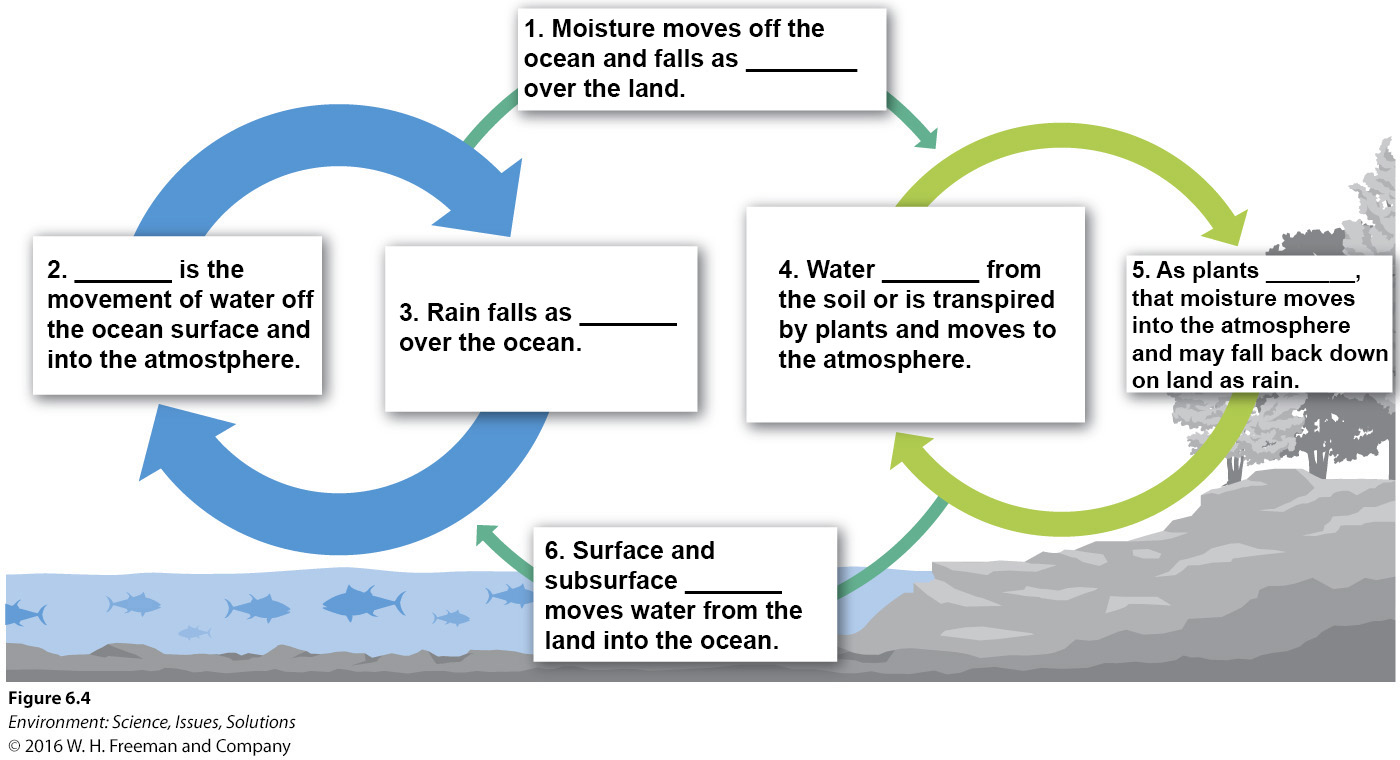Chapter 6. Critical Analysis Question
Introduction
Critical Analysis Question:
Use the information in the text to trace the potential paths a water molecule travels from the oceanic subcycle to the terrestrial subcycle, back to the oceanic subcycle.
To formulate your answer, first consider these additional thought questions:
Questions 1 & 2
1.
Rank the following reservoirs of water by size. For example, the largest reservoir would be ranked #1 and the smallest reservoir ranked #5.
Lakes, wetlands, rivers Glaciers and ice caps Atmosphere Oceans Groundwater 2.
Water moves between reservoirs, staying in some longer than others, but continuously cycling. Match the term to the correct description of the event in which it occurs.
a. The process in which water vapor is released by plants b. The process in which water moves down into the soil, forming groundwater c. The process in which water changes from a vapor or gas to a liquid, such as when rain is formed from clouds d. The process in which water changes from a liquid into a vapor, such as when moisture leaves the surface of the ocean when it is heated
Question 3
3.
For each numbered statement in the figure, select the best fill-in-the-blank answer from that question’s drop down list.

1 2 3 4 5 6
Critical Analysis Question
4.
Now we return to the original Critical Analysis Question: Use the information in the text to trace the potential paths a water molecule travels from the oceanic subcycle to the terrestrial subcycle, back to the oceanic subcycle.
6.1 Activity Completed!
Activity results are being submitted...